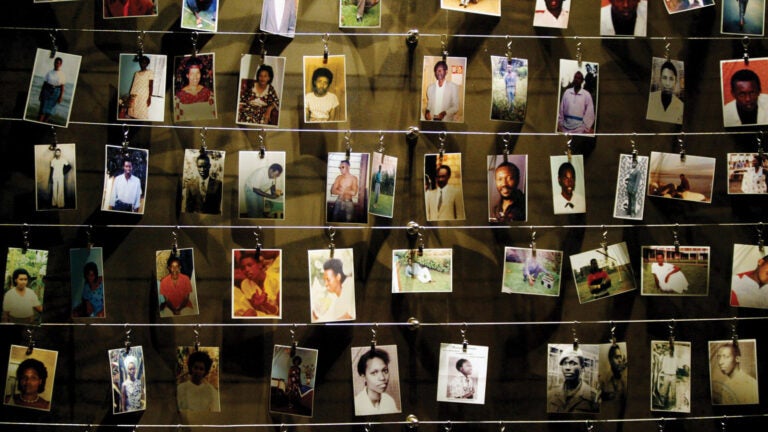
REUTERS/Radu Sigheti
USC Shoah Foundation Collects Lessons Learned and Shared Beyond the Holocaust
From Rwanda to Nanjing, the Shoah Foundation preserves the voices of genocide witnesses.
Some may feel that the Holocaust should stand alone, a horror to be studied and remembered, one that cannot be compared to any other. But to USC Shoah Foundation leaders, all genocides provide stories that can teach tolerance.
Sixty-five testimonies from the 1994 Rwandan Tutsi genocide recently joined the Visual History Archive, with hundreds more to follow, as teams of Rwandan interviewers and videographers are trained through a USC Shoah partnership with the Kigali Genocide Memorial. Testimonies from Armenia, Cambodia and Darfur also will join the collection.
In December, the institute announced plans to preserve testimony of the 1937 massacre in Nanjing, China.
As the institute helps others collect and preserve these testimonies, it is also turning toward distributing the stories, especially to teachers and students. That’s USC Shoah Foundation Executive Director Stephen Smith’s strong suit. But Smith, a Christian theologian by training, sees the USC Shoah Foundation testimonies as more than a scholarly resource. He considers them a sacred call to action.
“This is not a memorial to the past. It’s a challenge to our present,” says Smith, the UNESCO Chair on Genocide Education at USC. “In that archive are 52,000 people who have given us a legacy—an amazing, terrifying, horrible, hopeful, inspiring, challenging legacy. It’s a treasure trove of their lives. We need to listen to those voices. We need to keep the memory alive, because that’s the heart of our conscience.”
Faculty around the world have developed more than 400 courses drawing on the archive. Not confined to Holocaust studies or history, these courses range from information science at the Fachhochschule Potsdam to political science at Democritus University of Trace; from art history at the Freie Universität Berlin to linguistics at Charles University in Prague.
At USC, more than 100 courses rely on the testimonies. Colin Keaveney uses them in his advanced French literature course. One of the assigned texts is Dora Bruder, a novel about a young girl in Auschwitz. To anchor the story in reality, Keaveney assigns selected French-language testimonies as required viewing.
To encourage secondary school students to explore the archive, USC Shoah Foundation created the award-winning interactive website IWitness. Te institute also hosts a short-film contest for USC students.
While the full 52,000 testimonies are only available to USC Shoah partner institutions, anyone can visit VHA Online, where 1,200 English-language Holocaust testimonies and 10 Rwanda testimonies (in Kinyarwanda, with English subtitles) are viewable. Hundreds of testimonies can also be seen on the institute’s YouTube channel.
